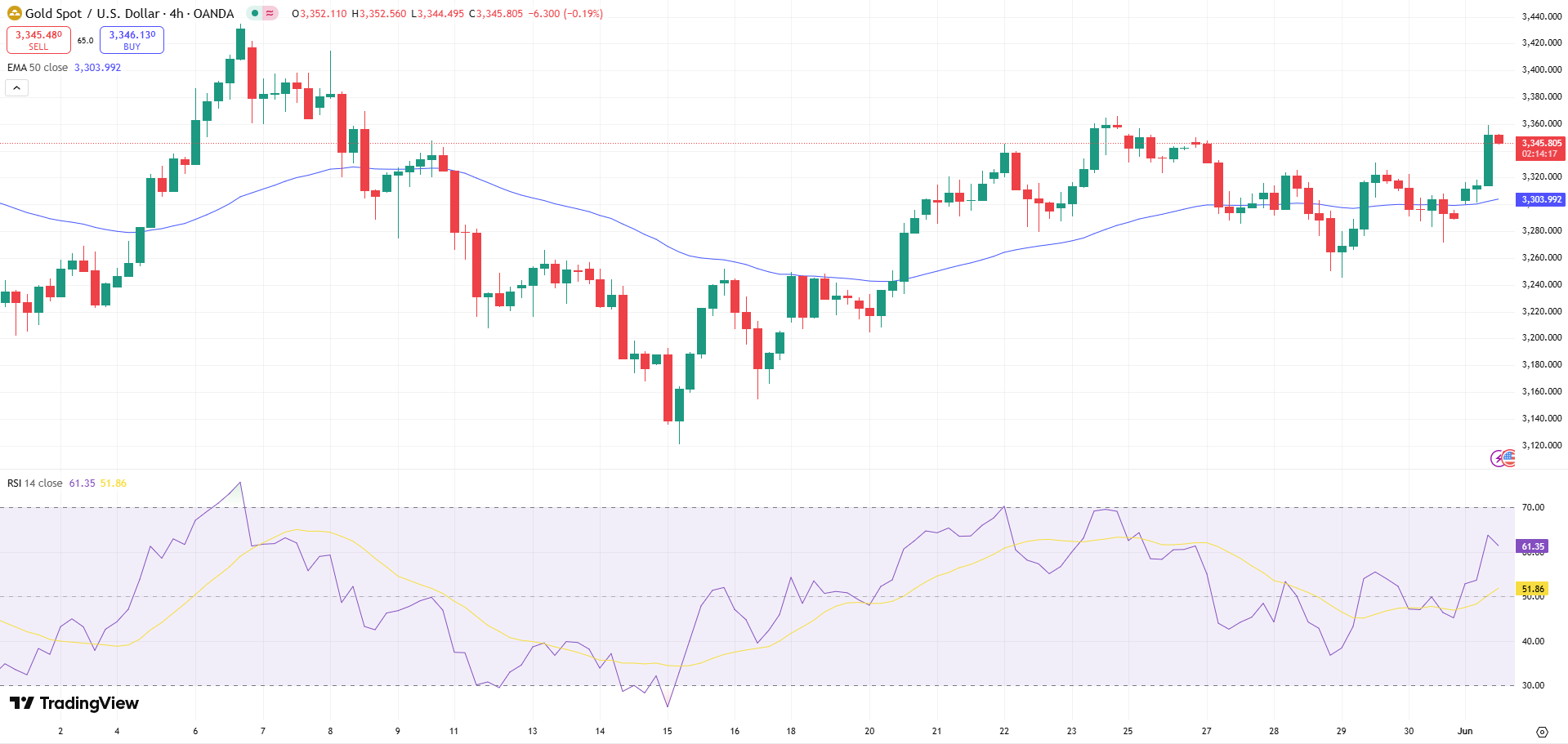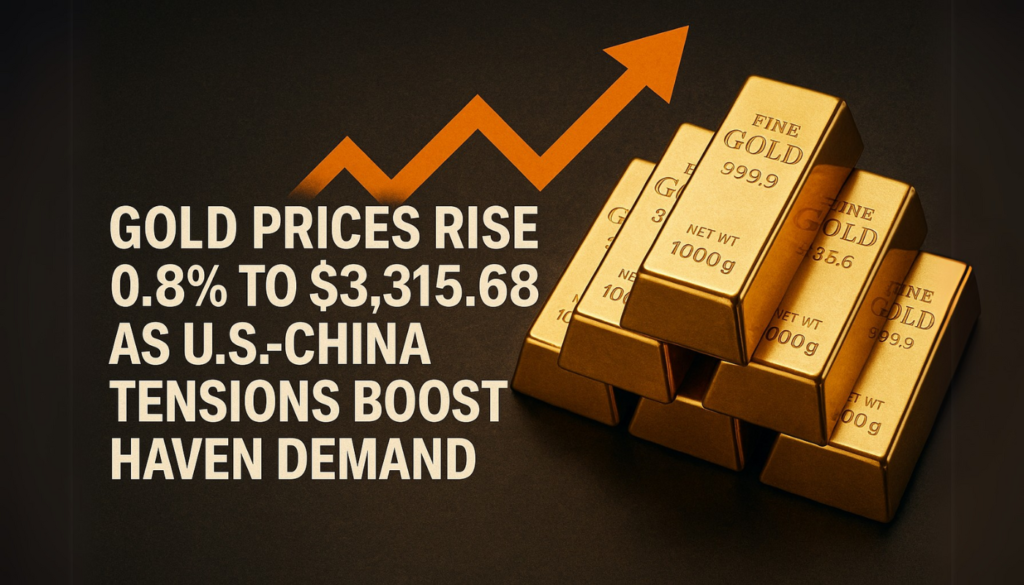Gold prices advanced on Monday, with spot gold rising 0.8% to $3,315.68 an ounce and August futures up 0.7% to $3,338.52/oz as of early Asian trade. Renewed trade tensions between the U.S. and China sparked fresh safe-haven buying.
Over the weekend, China rejected U.S. accusations of violating a recent trade agreement, warning it would defend its economic interests. This came after President Trump accused China of undermining the Geneva deal, with his administration admitting that talks had stalled. The friction has rattled global markets, driving investors toward assets like gold.
- Key gold price points:
- Spot gold: $3,315.68/oz (+0.8%)
- Gold futures (Aug): $3,338.52/oz (+0.7%)
Tariff Uncertainty Fuels Haven Demand
Markets were further unsettled by Trump’s announcement of plans to double tariffs on steel and aluminum imports to 50%, amplifying concerns about U.S. economic resilience. This has intensified speculation that escalating trade barriers could curb global growth and spur additional haven flows into gold and other precious metals.
Additionally, traders have dialed down expectations for a near-term U.S.-China trade resolution, fearing that negotiations may collapse altogether. The combination of tariff threats and uncertain trade outcomes has injected a note of caution into risk assets, boosting gold’s appeal.
Fed’s Dovish Tone and Weaker Dollar Lift Metals
Beyond trade-driven volatility, gold and other metals benefited from a softer U.S. dollar, following dovish remarks from Federal Reserve Governor Christopher Waller. Waller indicated his support for interest rate cuts later this year, citing muted inflation and robust employment data.

- Market reactions:
- U.S. dollar index slipped 0.1% in Asian trade
- Silver futures rose 0.6% to $33.220/oz
- Platinum futures dipped 0.5% to $1,050.10/oz
- London copper futures added 0.7% to $9,580.85/ton
Waller’s comments reinforced the view that the Fed is likely to ease monetary policy, particularly if tariff issues persist. A weaker dollar typically enhances demand for commodities priced in dollars, offering a further tailwind for metals.
While copper prices rose despite weak Chinese PMI data for May, signaling ongoing headwinds for industrial demand, the overall metals complex continues to gain from both macroeconomic uncertainty and supportive monetary policy signals.


